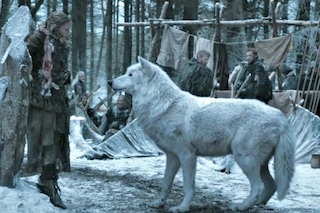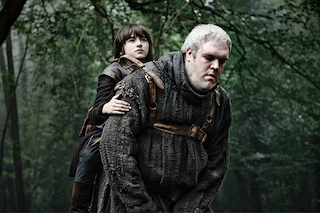
I received this book from the publisher, through NetGalley, in exchange for an honest review: my thanks to both of them for this opportunity.
My very first book by John Gwynne was this novel’s predecessor, A Time of Dread, and it revealed to me not just an author who has rapidly become one of my favorites, but a complex world that simply begged to be explored: for this reason I backtracked to Gwynne’s first series, The Faithful and the Fallen, and now that I have read its first two books I am getting a more detailed picture of the historical background for this new series titled Of Blood and Bone. As I said in my review for A Time of Dread, it’s not necessary to have read the four volumes of The Faithful and the Fallen to enjoy this new saga, but having walked through half of that journey helped me to appreciate this new story more, and every time there is a mention of characters or events from the past, it feels like meeting some old friends.
Unlike all other books I read from this author, who likes to prepare the scene at a leisurely stride, A Time of Blood starts at a high speed and never, ever stops, increasing its pace all throughout the story with almost no respite at all: the playing field has been set, the pieces are all in their places, and now there seems to be room only for action. The forces of evil are on the move, and as we learned previously, they have been preparing for a long time for their comeback, yet what’s terrifying is how they prepared: not just by working secretly for their return, but by forging alliances and increasing their numbers in ways that go well beyond the simple act of recruiting troops. Prepare to be shocked, terrified and revolted at the same time…
As for the forces of good… well, in some instances they have unwittingly moved in directions that might ultimately aid the ancient enemy: the Order of the Bright Star and the Ben-Elim are still allies, of course, but somewhat uneasy ones, and their different perspectives on how to prepare for the battle against the never-vanquished Kadoshim often generate the kind of attrition that undermines such alliances. The members of the Order are proud of their past history and present accomplishments, and don’t look too favorably on the Ben-Elim lording it over everything and everyone, posing as the sole saviors of humanity. There is a definite feel of political strife here that counterbalances nicely the physical battles and adds a worrisome note to what might be the outcome of the final struggle that looms ever closer on the horizon. And where politics are concerned, there is always the possibility of deceit and betrayal, which in a few instances come completely out of the blue and leave you reeling in shock.
A Time of Blood is indeed a book in which revelations abound, either concerning characters or present and past events, and it’s because of these surprises that the quick pacing of the story becomes more like a flood against which we have no other recourse but to go with the flow and see where it takes us. As if this were not enough, the novel contains an amazing number of battle scenes described with such a cinematic quality that it feels as if we were watching one of those complex action movies where the different clashes are choreographed with great skill and allow you to follow the single skirmishes together with the overall battle, without losing any detail. If this story were ever to be transposed either to the big or the small screen, these would be epic scenes, indeed, and once more I’m in awe of the author’s technique in blending the descriptions of weapons wielding with the characters’ feelings as they fight, adding the human side of the equation to what might otherwise be a simple portrayal of clashing steel.
The term epic is indeed the only one that can be correctly applied to this story where the brewing conflicts of Book 1 have come out into the open, encompassing a whole world, and we witness the bloody combat in which men and giants, angels and devils fight against each other together with their own allies – bears and wolvens and hellish creatures that are the stuff of nightmares. A title as A Time of Blood hardly prepares you to the level of violence described here, although it must be said that it’s never gratuitous and always serves the narrative purposes of the overall story, not to mention that it’s wonderfully balanced by the themes of hope and love, of friendship and loyalty that have often been the only light in this encroaching darkness. Still, John Gwynne is not the kind of author who cossets his characters, so they are more often than not put through the grinder, to the point that there is never the absolute certainty of their survival – and previous experience with his writing has taught me that no one is truly safe, which adds another layer to the high level of tension that runs through this book.
Speaking of the characters, they continue to shine and to gain new facets as their journey moves forward: my favorite remains young Drem – the hero of this tale – as he moves from the naive boy who lived in the wilderness with his father and had little experience of the world, to a determined warrior who knows he has to find his courage and fulfill his role in the coming war. It came natural for me to draw a parallel between Drem and Corban, the main character from The Faithful and the Fallen: in my musings about the latter I wrote that he gave off some “reluctant Chosen One” vibes I did not particularly enjoy, since he seemed at time prone to the why me? kind of whining that annoys me a little. While I’m aware that I don’t know Corban’s whole story yet, and therefore I know that I should suspend my judgement, I can’t help but feeling more partial toward Drem who does not show any of the usual signs of the fictional hero, but is rather an ordinary person called to deal with extraordinary events and doing his best to face them with bravery and determination.
What is very enjoyable in the characters of this saga (and the one that preceded it) is that they are equally flawed, be it because of pride, or arrogance, or the penchant for evil, but they all share one common trait: they believe in what they do, even the villains, they have a reason for being what they are, and even though there is no way I can sympathize with some of the “bad guys”, I can see where they come from, and this makes them real, and relatable just as much as the heroes of the story. And this is one of the elements that makes these novels so intriguing and riveting.
Did I find any fault in this second book? Yes, one: it ended too soon and did so on a massive cliffhanger which makes me wish I could read the final installment right now.
But it’s not really a fault – it’s an encouragement. As if I needed one… 🙂
My Rating: 
![]()




















You must be logged in to post a comment.